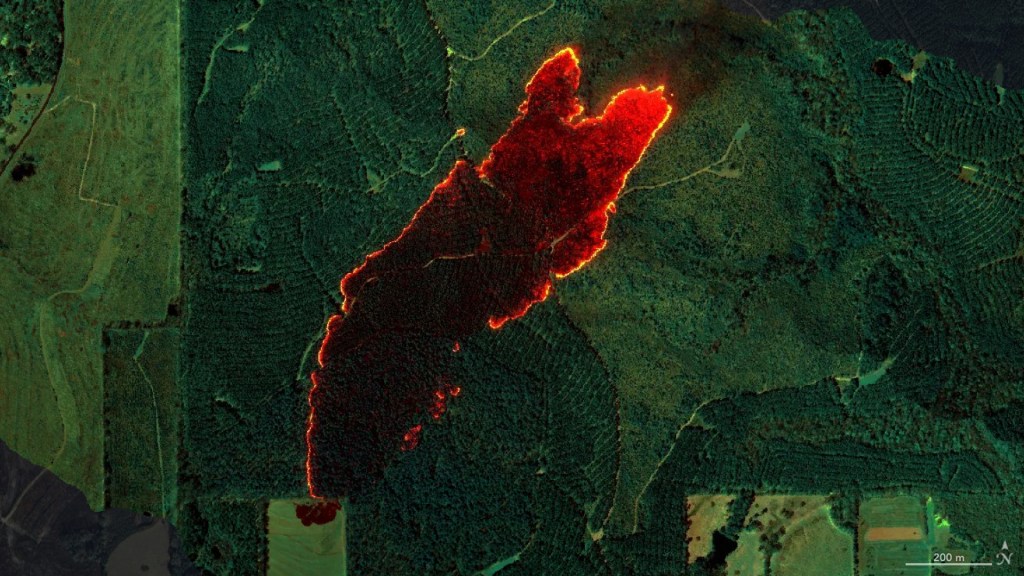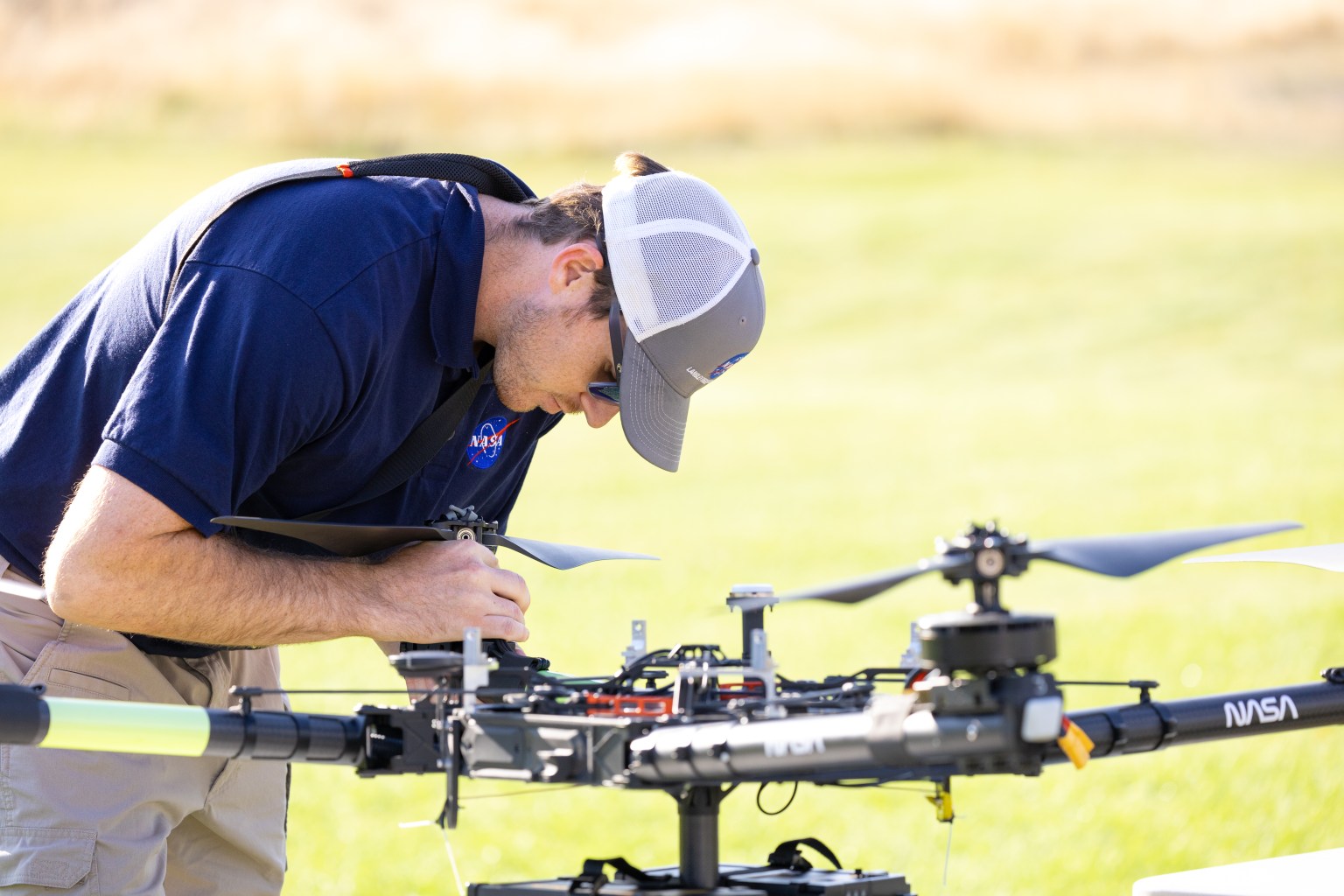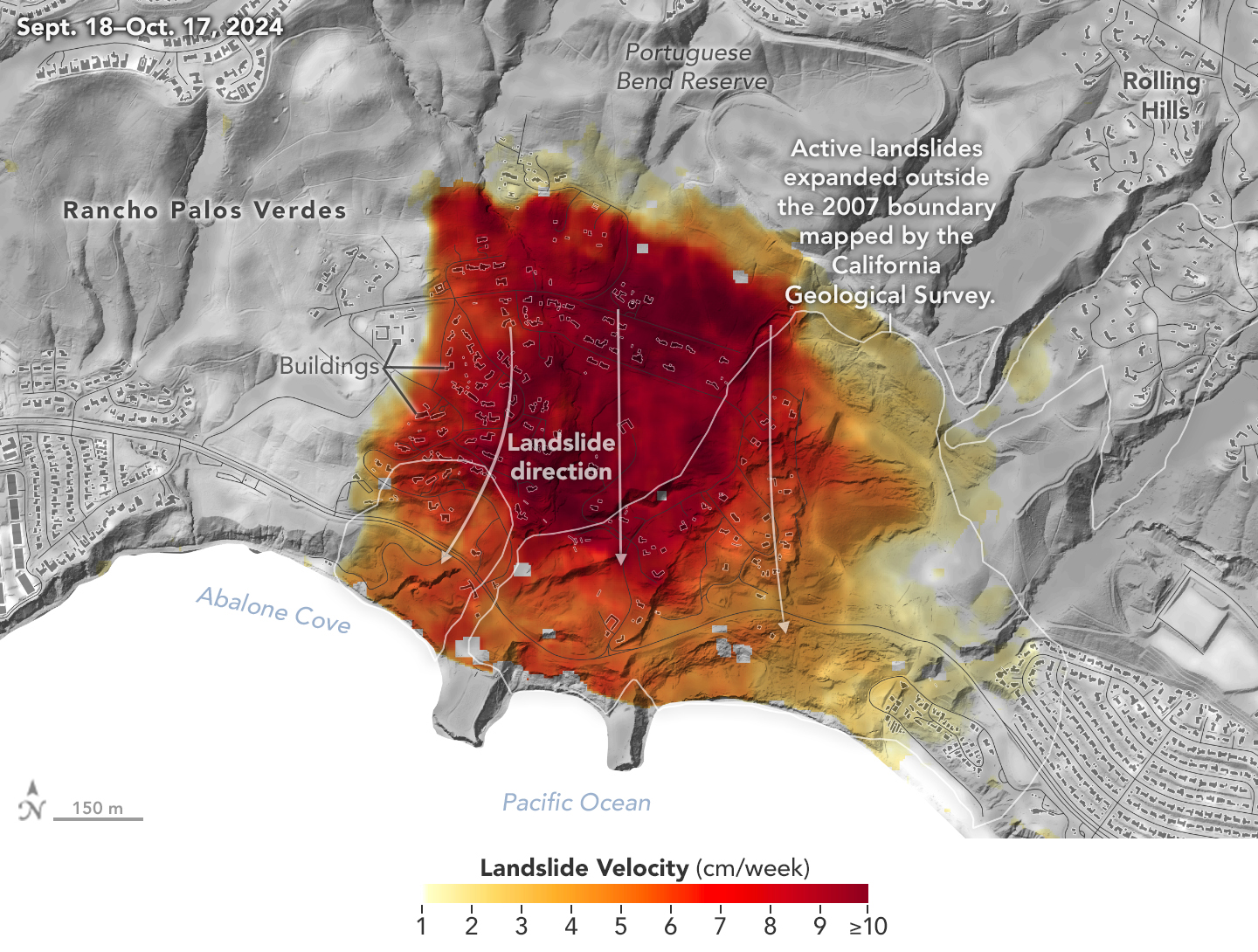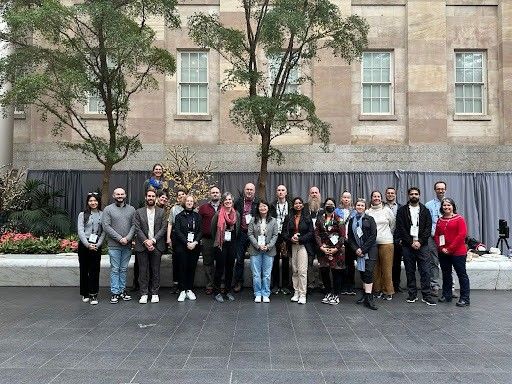1 min read Preparations for Next Moonwalk Simulations Underway (and Underwater) On April 16, 2025, the Earth Science Division at NASA’s Ames Research Center in Silicon Valley held an Earth Science Showcase to share its work with the center and their families. As part of this event, kids were invited to share something they like about the Earth. These are their masterpieces. Sora U. Age 9. “Wildlife” Sora U. Age 9. “Wildlife” Wesley P. Age 2.5. “Pale Blue” Wesley P. Age 2.5. “Pale Blue” Kira U. Age 5. “Hawaii” Kira…
Read MoreTag: Earth Science Division
NASA Airborne Sensor’s Wildfire Data Helps Firefighters Take Action
5 min read Preparations for Next Moonwalk Simulations Underway (and Underwater) NASA’s AVIRIS-3 airborne imaging spectrometer was used to map a wildfire near Cas-tleberry, Alabama, on March 19. Within minutes, the image was transmitted to firefighters on the ground, who used it to contain the blaze. NASA/JPL-Caltech, NASA Earth Observatory The map visualizes three wavelengths of infrared light, which are invisible to the human eye. Orange and red areas show cooler-burning areas, while yellow indicates the most intense flames. Burned areas show up as dark red or brown. NASA/JPL-Caltech, NASA…
Read MoreNASA-ISRO Mission Will Map Farmland From Planting to Harvest
The NISAR mission will help map crops and track their development through the entire growing season. Using synthetic aperture radar, the satellite will be able to observe both small plots of farmland and monitor trends across broad regions, gathering data to in-form agricultural decision making. Adobe Stock/Greg Kelton Data from the NISAR satellite will be used to map crop growth, track plant health, and monitor soil moisture — offering detailed, timely information for decision making. When it launches this year, the NISAR (NASA-ISRO Synthetic Aperture Radar) satellite will provide a…
Read MoreNASA Tests Drones to Provide Micrometeorology, Aid in Fire Response
5 Min Read NASA Tests Drones to Provide Micrometeorology, Aid in Fire Response Pilot in command Brayden Chamberlain performs pre-flight checks on the NASA Alta X quadcopter during the FireSense uncrewed aerial system (UAS) technology demonstration in Missoula. Credits: NASA ARC/Milan Loiacono In Aug. 2024, a team of NASA researchers and partners gathered in Missoula, to test new drone-based technology for localized forecasting, or micrometeorology. Researchers attached wind sensors to a drone, NASA’s Alta X quadcopter, aiming to provide precise and sustainable meteorological data to help predict fire behavior. Wildfires…
Read MoreNASA Awards Contract for Airborne Science Flight Services Support
NASA has awarded Dynamic Aviation Group Inc. of Bridgewater, Virginia, the Commercial Aviation Services contract to support the agency’s Airborne Science Program. The program provides aircraft and technology to further science and advance the use of Earth observing satellite data, making NASA data about our home planet and innovations accessible to all. This is an indefinite-delivery/indefinite-quantity firm-fixed-price contract with a maximum potential value of $13.5 million. The period of performance began Friday, Jan. 31, and continues through Jan. 30, 2030. Under this contract, the company will provide ground and flight crews…
Read MoreNASA Radar Imagery Reveals Details About Los Angeles-Area Landslides
NASA’s UAVSAR airborne radar instrument captured data in fall 2024 showing the motion of landslides on the Palos Verdes Peninsula following record-breaking rainfall in Southern California in 2023 and another heavy-precipitation winter in 2024. Darker red indicates faster motion. NASA Earth Observatory Analysis of data from NASA radar aboard an airplane shows that the decades-old active landslide area on the Palos Verdes Peninsula has expanded. Researchers at NASA’s Jet Propulsion Laboratory in Southern California used data from an airborne radar to measure the movement of the slow-moving landslides on the…
Read MoreScience Done by Volunteers Highlighted at December’s American Geophysical Union Meeting
More than 30,000 scientists gathered in Washington, D.C. during the second week of December – many to show off the work of NASA’s science volunteers! The American Geophysical Union held its annual meeting of professionals this month – the world’s largest gathering of Earth and Space Scientists. Here’s what they were talking about. Eighteen NASA-sponsored project team members presented discoveries made with volunteers on topics from solar eclipses to global freshwater lake monitoring and exoplanet research. Overall, 175 posters and presentations featured the work of volunteers (up from 137 in…
Read MoreEntrevista con Instructor de OCEANOS Samuel Suleiman
3 min read Preparations for Next Moonwalk Simulations Underway (and Underwater) Samuel Suleiman, instructor de la pasantía OCEANOS, enseña a los estudiantes sobre el sargazo y la ecología costera en la Isla Culebra, Puerto Rico, durante la sección de trabajo de campo del proyecto. Suleiman también es el Director Ejecutivo de Sociedad Ambiente Marino: una ONG puertorriqueña que trabaja en la conservación y restauración de arrecifes de coral. NASA ARC/Milan Loiacono Read this interview in English here ¿Cuál es tu nombre y tu rol en OCEANOS? Mi nombre es Samuel…
Read MoreEntrevista con Instructora de OCEANOS María Fernanda Barbarena-Arias
4 min read Preparations for Next Moonwalk Simulations Underway (and Underwater) María Fernanda Barbarena-Arias (izquierda), profesora asociada de biología e instructora de la pasantía OCEANOS, de pie en la arena de Playa Melones, Isla Culebra, durante la sección de trabajo de campo de la pasantía. NASA ARC/Milan Loiacono Read this interview in English here ¿Cuál es tu nombre y tu rol en OCEANOS? Mi nombre es María Fernanda Barbarena-Arias. Soy una profesora asociada al Departamento de Ciencia Natural, específicamente Biología, en la Universidad Interamericana, en el Recinto Metropolitano. Para OCEANOS,…
Read MoreInterview with OCEANOS Instructor María Fernanda Barbarena-Arias
4 min read Preparations for Next Moonwalk Simulations Underway (and Underwater) María Fernanda Barbarena-Arias (left), an associate professor of biology and instructor for the OCEANOS internship, stands on the sand of Playa Melones, Culebra Island, during the field work section of the internship. NASA ARC/Milan Loiacono What is your name and your role with OCEANOS? My name is María Fernanda Barbarena-Arias. I am an associate professor of biology at the American University of Puerto Rico, Metropolitan Campus. I am also a co-PI in the OCEANOS project, and an instructor and…
Read More







